engine SSANGYONG KORANDO 2013 Service Manual
[x] Cancel search | Manufacturer: SSANGYONG, Model Year: 2013, Model line: KORANDO, Model: SSANGYONG KORANDO 2013Pages: 1336, PDF Size: 92.18 MB
Page 441 of 1336
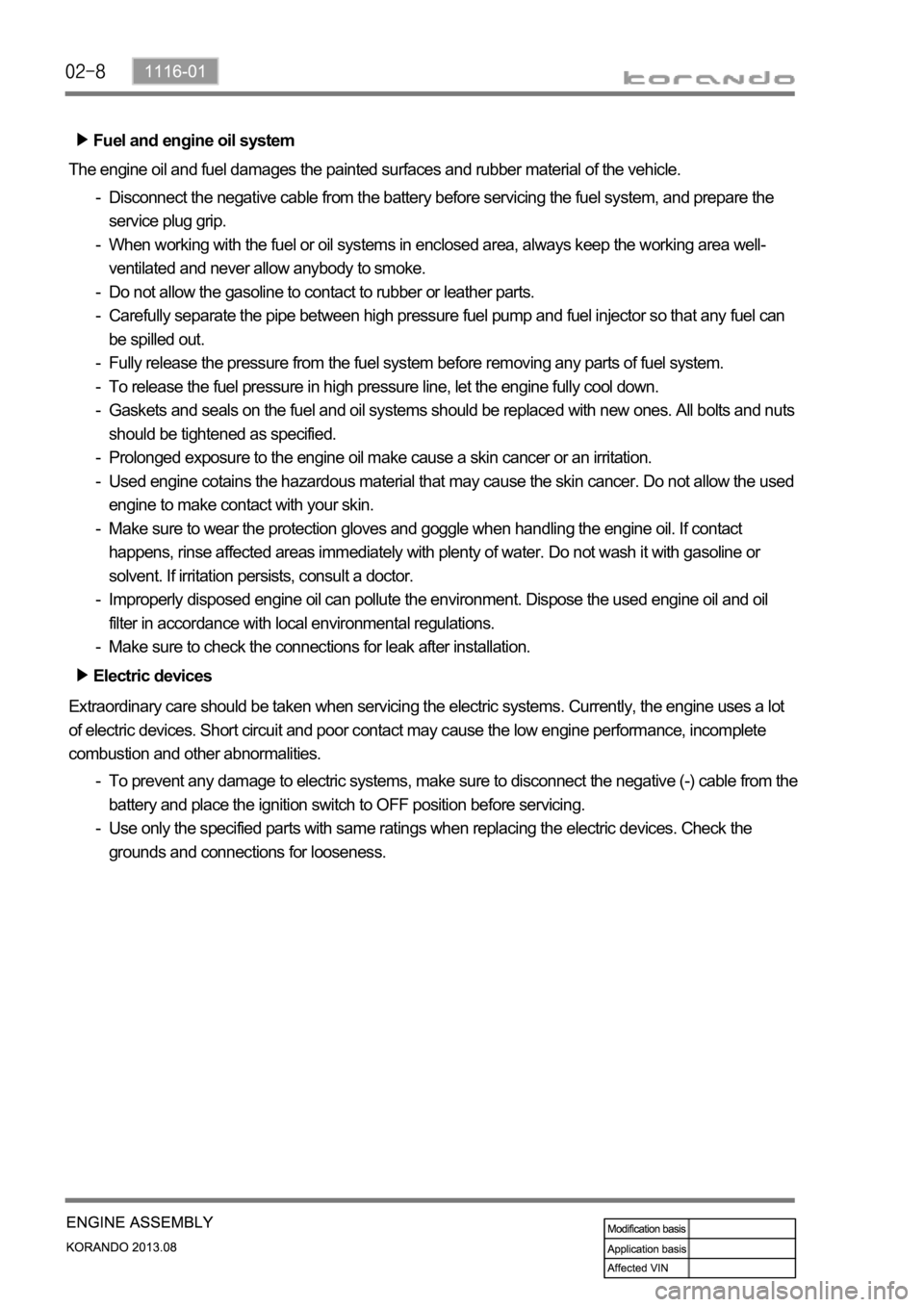
Fuel and engine oil system
The engine oil and fuel damages the painted surfaces and rubber material of the vehicle.
Disconnect the negative cable from the battery before servicing the fuel system, and prepare the
service plug grip.
When working with the fuel or oil systems in enclosed area, always keep the working area well-
ventilated and never allow anybody to smoke.
Do not allow the gasoline to contact to rubber or leather parts.
Carefully separate the pipe between high pressure fuel pump and fuel injector so that any fuel can
be spilled out.
Fully release the pressure from the fuel system before removing any parts of fuel system.
To release the fuel pressure in high pressure line, let the engine fully cool down.
Gaskets and seals on the fuel and oil systems should be replaced with new ones. All bolts and nuts
should be tightened as specified.
Prolonged exposure to the engine oil make cause a skin cancer or an irritation.
Used engine cotains the hazardous material that may cause the skin cancer. Do not allow the used
engine to make contact with your skin.
Make sure to wear the protection gloves and goggle when handling the engine oil. If contact
happens, rinse affected areas immediately with plenty of water. Do not wash it with gasoline or
solvent. If irritation persists, consult a doctor.
Improperly disposed engine oil can pollute the environment. Dispose the used engine oil and oil
filter in accordance with local environmental regulations.
Make sure to check the connections for leak after installation. -
-
-
-
-
-
-
-
-
-
-
-
Electric devices
To prevent any damage to electric systems, make sure to disconnect the negative (-) cable from the
battery and place the ignition switch to OFF position before servicing.
Use only the specified parts with same ratings when replacing the electric devices. Check the
grounds and connections for looseness. -
- Extraordinary care should be taken when servicing the electric systems. Currently, the engine uses a lot
of electric devices. Short circuit and poor contact may cause the low engine performance, incomplete
combustion and other abnormalities.
Page 442 of 1336
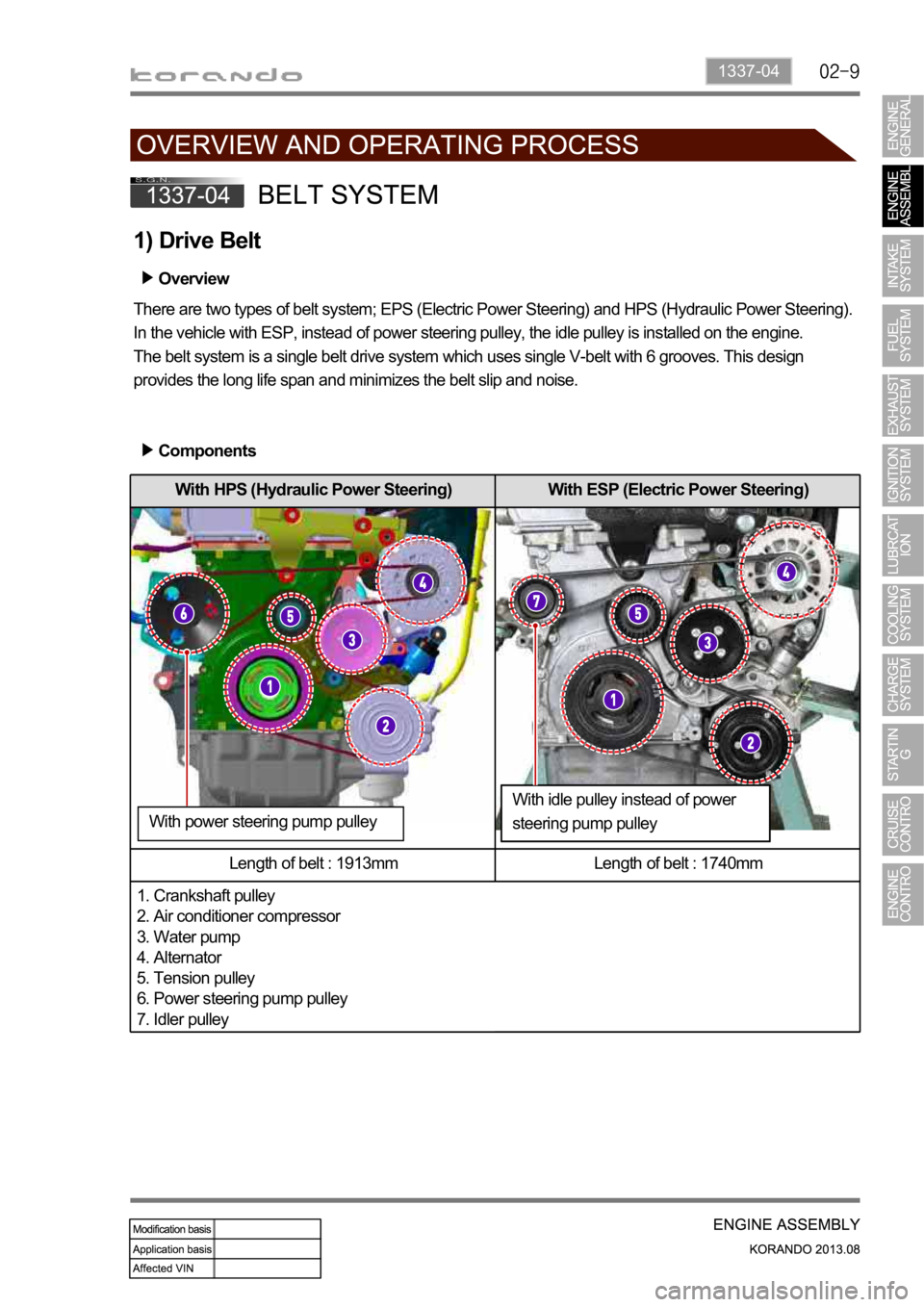
1337-04
With HPS (Hydraulic Power Steering) With ESP (Electric Power Steering)
Length of belt : 1913mm Length of belt : 1740mm
1. Crankshaft pulley
2. Air conditioner compressor
3. Water pump
4. Alternator
5. Tension pulley
6. Power steering pump pulley
7. Idler pulley
1) Drive Belt
Overview
There are two types of belt system; EPS (Electric Power Steering) and HPS (Hydraulic Power Steering).
In the vehicle with ESP, instead of power steering pulley, the idle pulley is installed on the engine.
The belt system is a single belt drive system which uses single V-belt with 6 grooves. This design
provides the long life span and minimizes the belt slip and noise.
Components
With idle pulley instead of power
steering pump pulley With power steering pump pulley
Page 443 of 1336

2) Hydraulic Tensioner Assembly
The hydraulic tensioner maintains the belt tension to minimize the slip and vibration and provides long
life span of the belt. Hydraulic tensioner consists of hydraulic tension spring, hydraulic damper, lever arm
and tension pulley.
To transfer the tension to the belt from the hydraulic tensioner in small working space in G20DF engine,
the belt system uses the longer lever arm.Overview
Location and Components
Hydraulic tensioner assembly
Components
No Name
1 Tensioner pulley cap
2 Tensioner pulley mounting bolt
3 Tensioner pulley
4 Lever arm
5 Hydraulic tensioner bolt
6 Hydraulic tensioner
Page 445 of 1336

Location
Front mounting assembly
Location: Front side of transaxle housing and
front side of sub frame
Location Front mountingRight mounting assembly
Location: Engine block side and body side
member
Location Right mounting
Left mounting assembly
Location: Upper side of transaxle housing and
body side member
Location Left mountingRear mounting assembly
Location: Rear side of transaxle housing and front
side of sub frame
Location Rear mounting
Page 453 of 1336
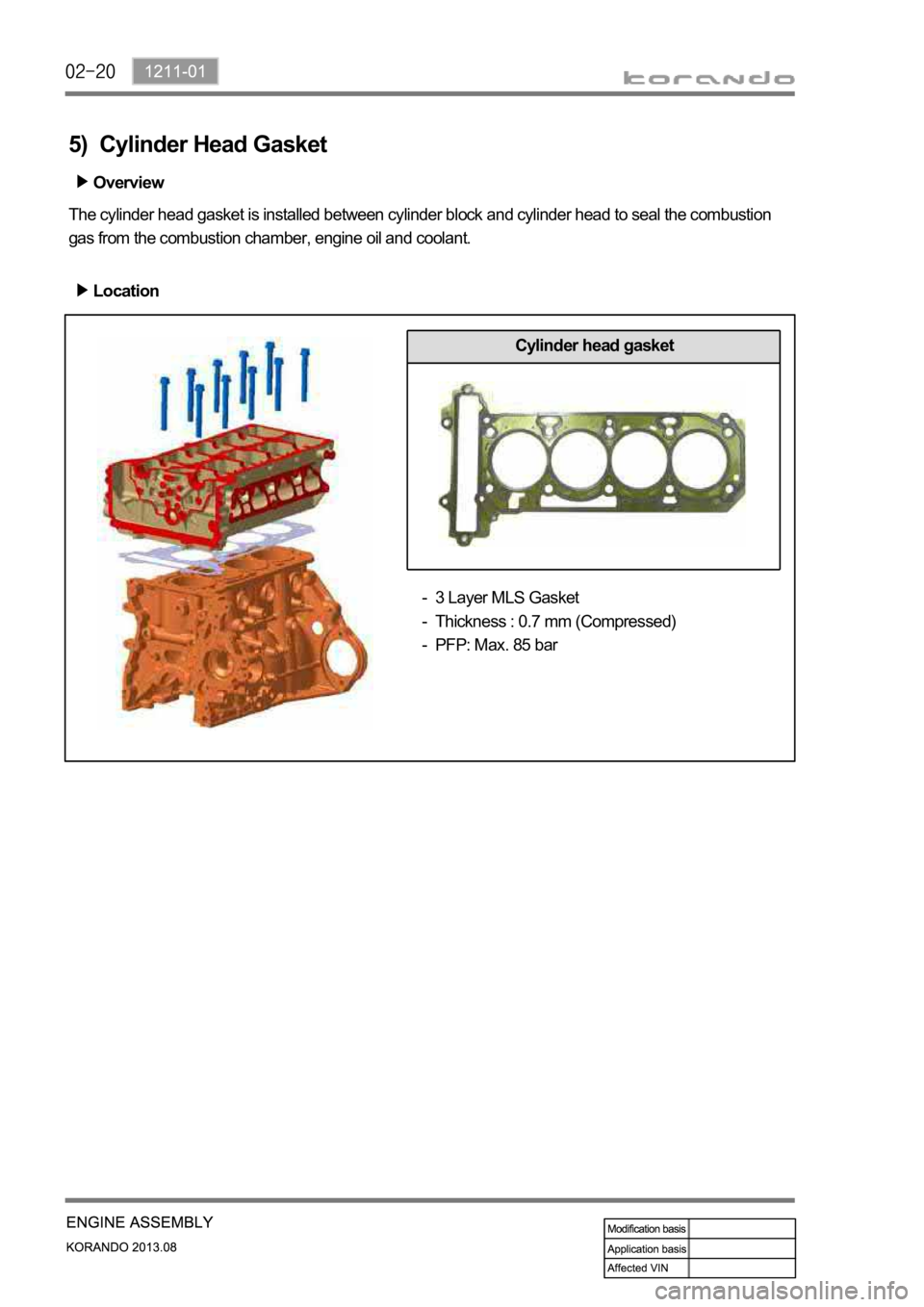
5) Cylinder Head Gasket
The cylinder head gasket is installed between cylinder block and cylinder head to seal the combustion
gas from the combustion chamber, engine oil and coolant.Overview
Location
Cylinder head gasket
3 Layer MLS Gasket
Thickness : 0.7 mm (Compressed)
PFP: Max. 85 bar -
-
-
Page 455 of 1336
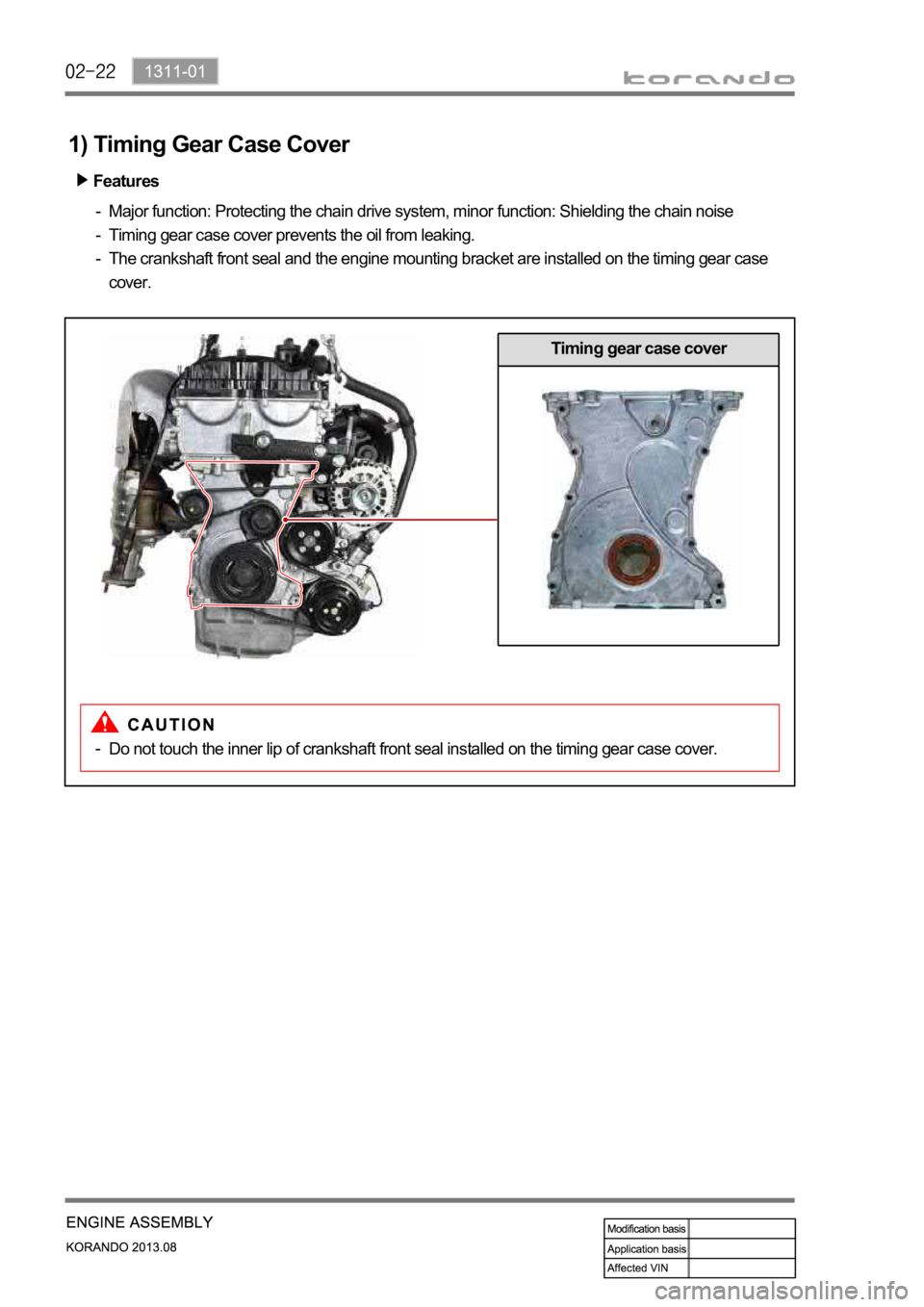
1) Timing Gear Case Cover
Features
Major function: Protecting the chain drive system, minor function: Shielding the chain noise
Timing gear case cover prevents the oil from leaking.
The crankshaft front seal and the engine mounting bracket are installed on the timing gear case
cover. -
-
-
Timing gear case cover
Do not touch the inner lip of crankshaft front seal installed on the timing gear case cover. -
Page 456 of 1336
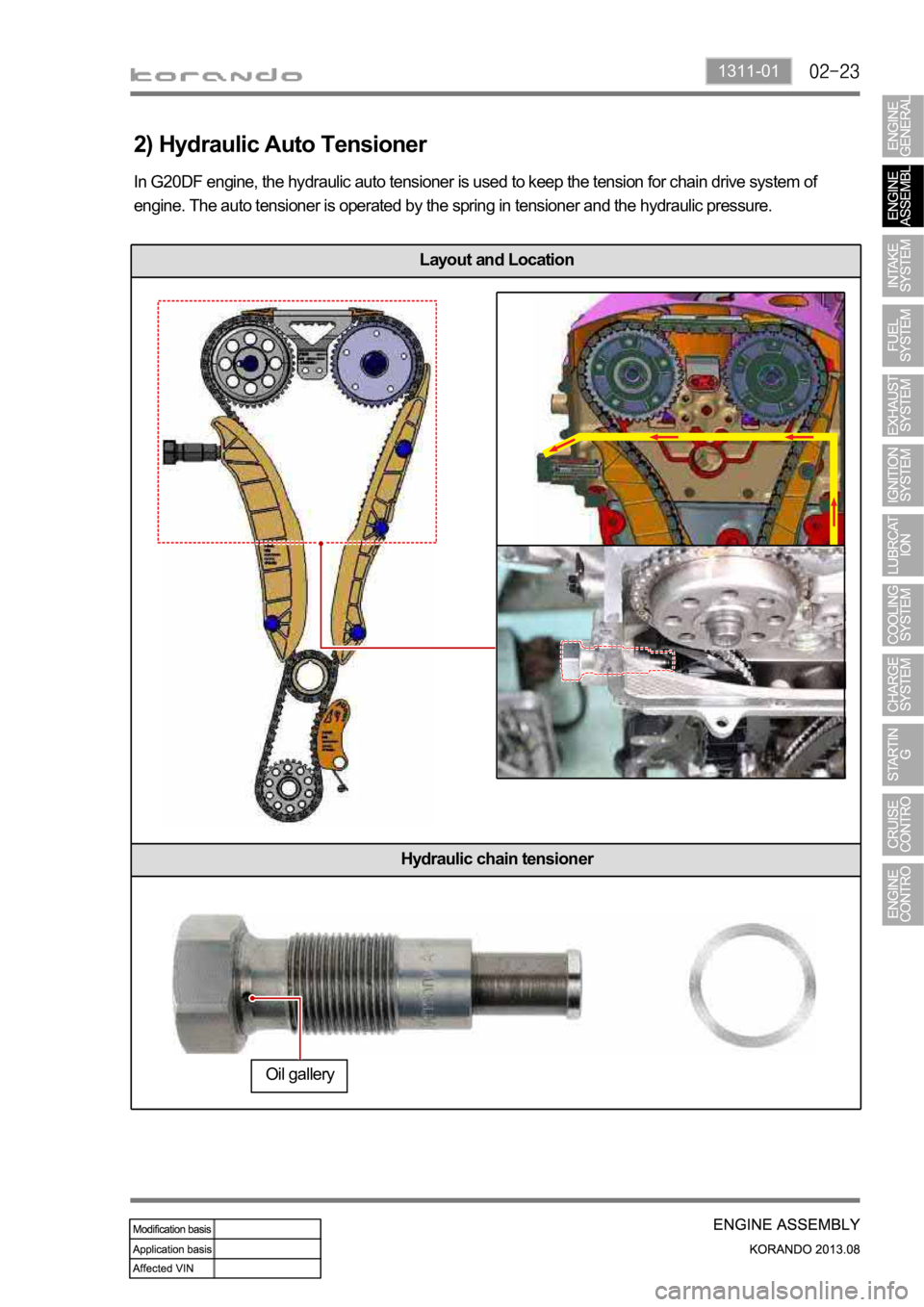
1311-01
Layout and Location
Hydraulic chain tensioner
In G20DF engine, the hydraulic auto tensioner is used to keep the tension for chain drive system of
engine. The auto tensioner is operated by the spring in tensioner and the hydraulic pressure.
2) Hydraulic Auto Tensioner
Oil gallery
Page 459 of 1336

Clamping rail
Installed between intake
camshaft sprocket and
crankshaft sprocket
5) Chain Rails
The chain rails are used for optimizing the movement of chain drive system. And they also prevent the
chain from contacting each other when the chain is loose, and reduces the chain wear. The chain rail is
normally made of PA (Polyamide nylon), and PA66 and PA46 are used for the chain rails in G20DF
engine. For the tensioner rail, PA46 is used to provide high anti-wear function and high strength since
the load to the rail is huge. Ther is an open area for shoulder bolt hole in the clamping rail. The chain
rails are installed by shoulder bolts.
Tensioner rail
Installed between
exhaust camshaft
sprocket and crankshaft
sprocket
Page 460 of 1336
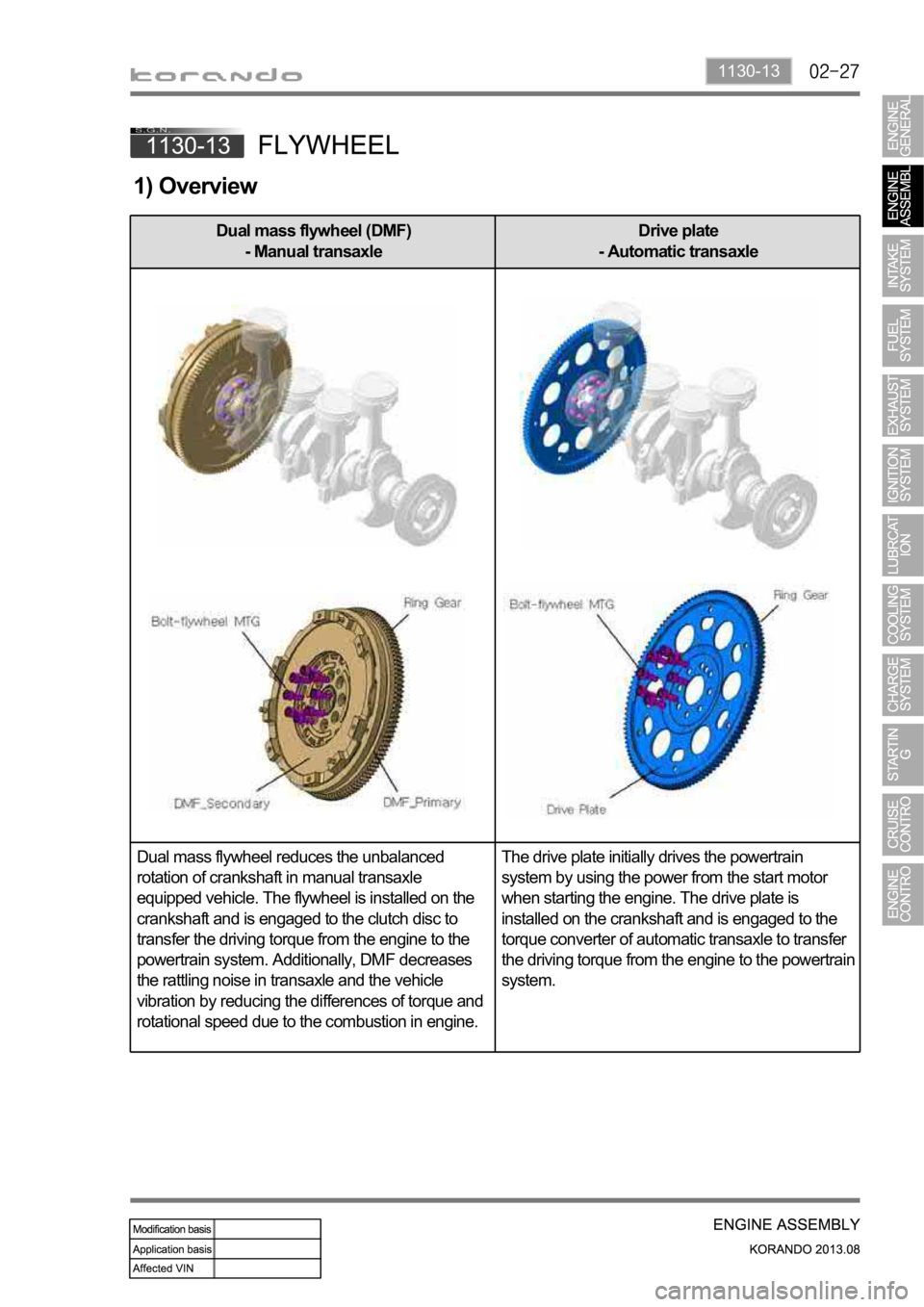
1130-13
1) Overview
Dual mass flywheel (DMF)
- Manual transaxleDrive plate
- Automatic transaxle
Dual mass flywheel reduces the unbalanced
rotation of crankshaft in manual transaxle
equipped vehicle. The flywheel is installed on the
crankshaft and is engaged to the clutch disc to
transfer the driving torque from the engine to the
powertrain system. Additionally, DMF decreases
the rattling noise in transaxle and the vehicle
vibration by reducing the differences of torque and
rotational speed due to the combustion in engine.The drive plate initially drives the powertrain
system by using the power from the start motor
when starting the engine. The drive plate is
installed on the crankshaft and is engaged to the
torque converter of automatic transaxle to transfer
the driving torque from the engine to the powertrain
system.
Page 461 of 1336
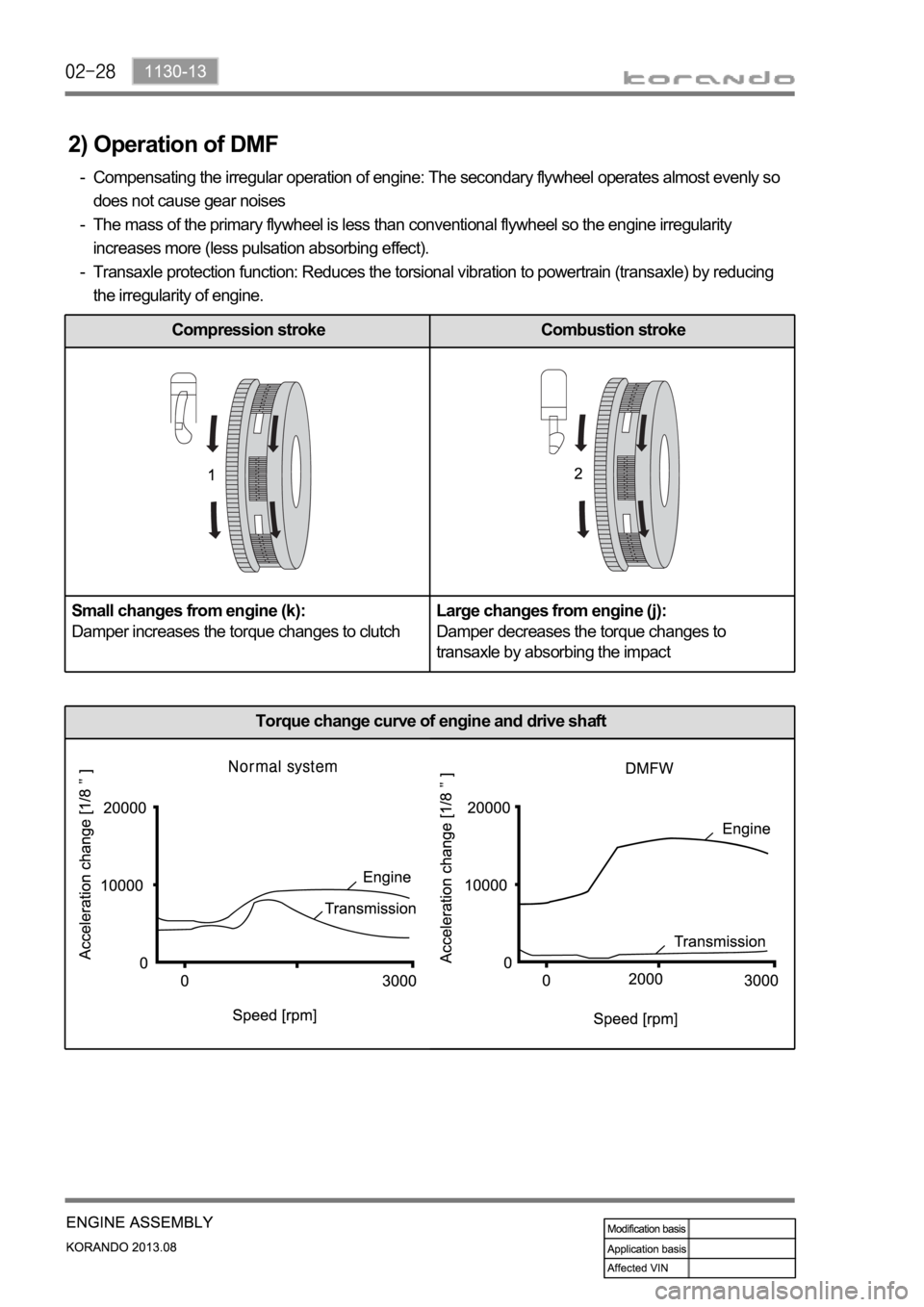
2) Operation of DMF
Compensating the irregular operation of engine: The secondary flywheel operates almost evenly so
does not cause gear noises
The mass of the primary flywheel is less than conventional flywheel so the engine irregularity
increases more (less pulsation absorbing effect).
Transaxle protection function: Reduces the torsional vibration to powertrain (transaxle) by reducing
the irregularity of engine. -
-
-
Compression stroke Combustion stroke
Small changes from engine (k):
Damper increases the torque changes to clutchLarge changes from engine (j):
Damper decreases the torque changes to
transaxle by absorbing the impact
Torque change curve of engine and drive shaft